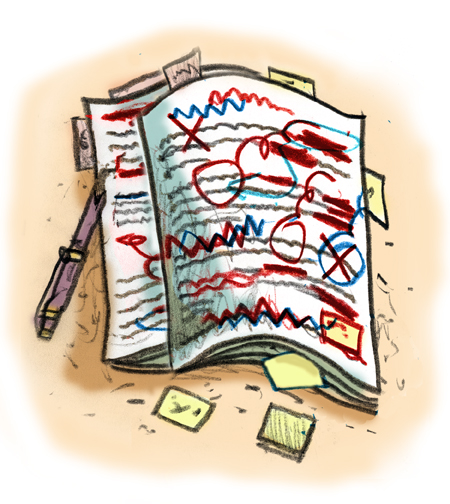When the other party’s counsel does the first draft, I have to work within the confines of whatever I’m given. In my review, I focus on what doesn’t reflect the deal as I see it or what might cause confusion—trying to turn their draft into a thing of beauty would waste everyone’s time and might hurt feelings. But do you ever reach a point where their draft is so messy that you say, enough is enough, and you permit yourself to make a bunch of changes that just make the contract shorter and easier to read?
I haven’t done deals in many years, so my take on this is entirely theoretical. At some point, a draft is chaotic enough that the investment required to fix it is justified by the nuisance inflicted on those who have to review it, negotiate it, and, ultimately, enforce it and interpret it. Given the various factors involved (the drafting problems, the nature of the deal, the respective bargaining power of the parties, the personalities involved), making that call would presumably at some point involve you sticking your finger in the air and saying, Eff it, I’m doing it.
[As Mark Anderson notes in this comment on LinkedIn, a more diplomatic alternative might be to find some reason for using your template instead—assuming you have a suitable template.]
Have you encountered this situation? How has it played out for you?


I prefer to avoid situations where I have to scrub someone else’s draft. That takes time and fees. Sometimes, you can politely ask the other attorney to use your draft. A lot of attorneys do not like to draft or are uncomfortable drafting and will let you do the lifting (“Hey, I’ve already got great a template for this, mind if I use it for this transaction?”). This works quite often. Another, less polite variant is to quickly respond with your draft if you receive an unacceptable draft from opposing counsel. Some attorneys will get the message. If your client has enough leverage, insist that the other side use your draft.
Scrubbing happens when you are stuck using the other side’s draft, but the draft is deficient in some way that creates an unreasonable risk of a negative outcome. Do what it takes to mitigate the unreasonable risks. If you’re focused and your changes make the draft better, you probably won’t encounter too much resistance even the changes are extensive.
I’m not even sure this reads on my experience. There are plenty of messy drafts, but your mess tolerance has to be really low to condemn a whole turn. Client interest in efficient and orderly closing overrides. The psychology of starting negotiations with an outright rejection ain’t great.
I do occasionally see deals done on different terms than were first proposed. But that’s often a result of substantial leverage or a more or less mutual understanding that the terms of a draft are too interdependent to revise safely and efficiently, or too far from the kind of terms needed for the deal type to make sense. “We are going to get in trouble trying to tweak terms this complex for what we need.” “It looks like we’re trying to turn an X agreement into more of a Y agreement. Could we find a closer starting point?”
I still see deals for software/cloud services where one side or the other started by proposing a software license agreement. “I see you’ve sent us your standard form for software licensing. Do you have a form for software as a service? If not, would you be open to seeing ours?”